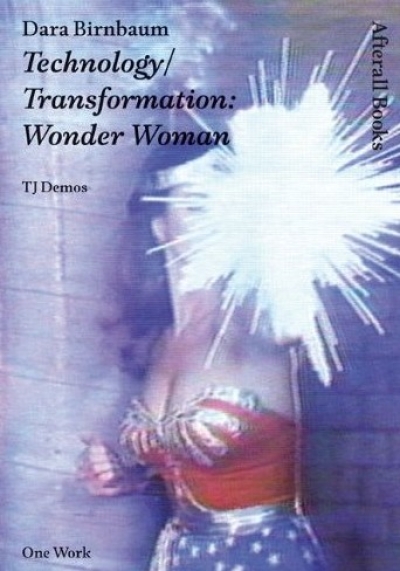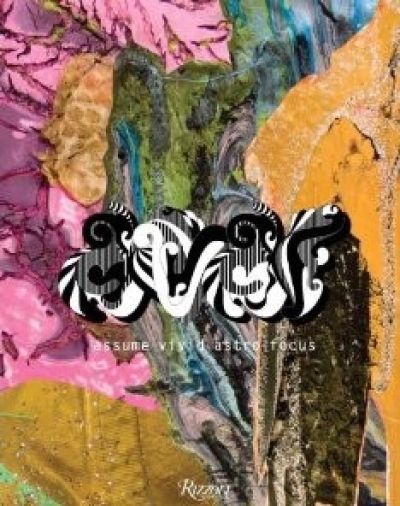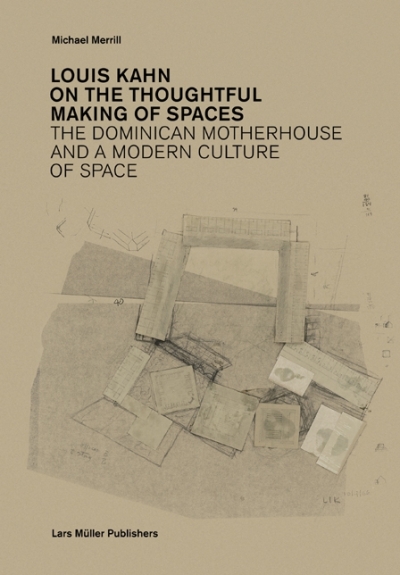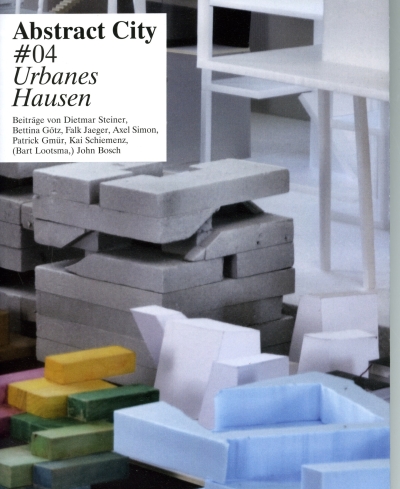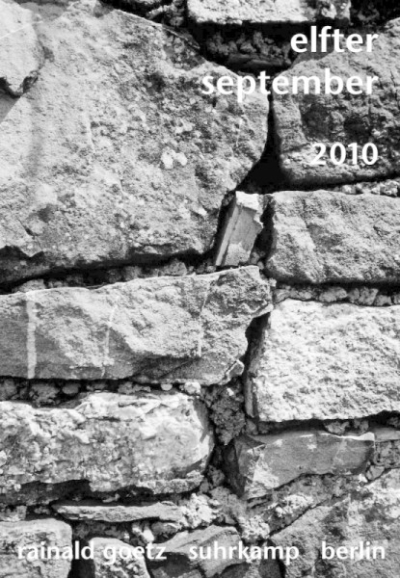gerade nicht auf Lager
Mieke Gerritzen, Geert Lovink, Minke…
I Read Where I Am. Exploring New Information Cultures
gerade nicht auf Lager
Matt Mullican
Notating the Cosmology 1973-2008
gerade nicht auf Lager
Arno Brandlhuber, Silvan Linden (Hg.)
Disko 20-25 Architektur ohne Architektur
gerade nicht auf Lager
Craig Buckley, Jean-Louis Violeau (Hg.)
Utopie. Texts and Projects, 1967–1978
gerade nicht auf Lager
Jürgen Krusche, Günther Vogt
Strassenräume in Berlin, Shanghai, Tokyo, Zürich. Eine foto…
gerade nicht auf Lager
David Ake
Source. Music of the Avant-garde, 1966 - 1973
gerade nicht auf Lager
Murray Grigor
Infinite Space. Der Architekt John Launter. DVD
gerade nicht auf Lager
Yona Friedman
Architecture with the People, by the People
gerade nicht auf Lager
Lars Lerup
One Million Acres & No Zoning
gerade nicht auf Lager
M, Kelley, J. Shaw, Niagara, C, Loren
Destroy All Monsters Magazine 1976-1979
gerade nicht auf Lager
M. Hlavajova, S. Sheikh, J. Winder (Hg.)
On Horizons. A Critical Reader in Contemporary Art
gerade nicht auf Lager
Michael Sorkin
All Over the Map. Writing on Buildings and Cities
gerade nicht auf Lager
Nadine Barth (Hg.)
German Fashion Design 1946-2012
gerade nicht auf Lager
Simon Reynolds
Retromania. Pop Culture's Addiction to its Own Past
gerade nicht auf Lager
Stan Allen, Marc McQuade (Hg.)
Landform Building
gerade nicht auf Lager
Fredric Jameson
Representing Capital. A Reading of Volume One
gerade nicht auf Lager
Magdalena Taube, Krystian Woznicki (Hg.)
Modell Autodidakt
gerade nicht auf Lager
McKenzie Wark
The Beach Beneath the Street. The Everyday Life and…
gerade nicht auf Lager
Pedro Barateiro, Ricardo Valentim (Hg.)
Activity (is to a group what content is to platform)
gerade nicht auf Lager
El Croquis 155
Sanaa 2008-2011
gerade nicht auf Lager
Laurie Anderson, Trisha Brown, Gordon…
Pioneers of the Downtown Scene
gerade nicht auf Lager
Curtis, Rees, White, Ball (Hg.)
Expanded Cinema. Art, Performance, Film
gerade nicht auf Lager
Kaminer, Robles-Dúran, Sohn (Hg.)
Urban Asymmetries
gerade nicht auf Lager
Abel, Evers, Klaasen, Troxler (Hg.)
Open Design Now. (why design cannot remain exclusive)
gerade nicht auf Lager
AA Bronson, Peter Hobbs
Queer Spirits
gerade nicht auf Lager
A. Avanessian, L. Skrebowski (Hg.)
Contemporary Art and Aesthetics
gerade nicht auf Lager
2G N. 57
Njiric+ Architekti
gerade nicht auf Lager
Lucia Nagib
World Cinema and the Ethics of Realism
gerade nicht auf Lager
Huda Smitshuijzen, Abi Fares (Hg.)
Typographic Matchmaking in the City
gerade nicht auf Lager
H. F. Mallgrave, D. Goodman
An Introduction to Architectural Theory. 1968 to the Present
gerade nicht auf Lager
Alexander Bolton
Alexander McQueen. Savage Beauty
gerade nicht auf Lager
Professur Theorie und Geschichte der…
Architecture in the Age of Empire / Architektur der neuen…
gerade nicht auf Lager
Garth A. Myers
African Cities. Alternative Visions of Urban Theory and…
gerade nicht auf Lager
Jean-Louis Cohen
Architecture in Uniform. Designing and Building for the 2nd…
gerade nicht auf Lager
Christopher Dell
Replaycity. Improvisation als urbane Praxis
Byung-Chul Han
Shanzhai. Dekonstruktion auf Chinesisch
gerade nicht auf Lager
Kaoru Takahashi (Hg.)
Hello! UK Graphics. Graphic Design in the UK since the 1980s
gerade nicht auf Lager
Josep Lluís Mateo
After Crisis. Contemporary Architectural Conditions
gerade nicht auf Lager
Louis Luthi
On the Self-reflexive Page
gerade nicht auf Lager
O.M. Ungers
Morphologie City Metaphors
gerade nicht auf Lager
Lisa Taylor & Gardeners of Seattle…
Your Farm in the City
gerade nicht auf Lager
Hassenpflug, Giersig, Stratmann
Reading the City. Stadt lesen
gerade nicht auf Lager
Butler, Habermas, Taylor, West
The Power of Religion in the Public Sphere
gerade nicht auf Lager
Richard Fairfield
The Modern Utopian. Alternative Communities of the 60s and…
gerade nicht auf Lager
Jochen Rädeker, Kirsten Dietz
Reporting. Unternehmenskommunikation als Imageträger
gerade nicht auf Lager
Lorey, Nigro, Raunig (Hg.)
Inventionen 1. Gemeinsam. Prekär. Potentia. Dis-/Konjunktion
gerade nicht auf Lager
Jimini Hignett
The Detroit Diary
gerade nicht auf Lager
Klanten, Mollard, Hübner (Hg.)
Behind the Zines. Self-Publishing Culture
gerade nicht auf Lager
Tom Holert
Civic City Cahier 3. Distributed Agency, Design’s…
gerade nicht auf Lager
Paul Van Beek, Charles Vermaas
Landscapology. Learning to Landscape the City
gerade nicht auf Lager
Jan Ole Arps
Frühschicht. Linke Fabrikintervention in den 70er Jahren
gerade nicht auf Lager
Gunter Reski, Marcus Weber (Hg.)
Captain Pamphile. Ein Bildroman
gerade nicht auf Lager
Amy Allen (Hg.)
Democracy in What State?
gerade nicht auf Lager
D. Hauptmann, W. Neidich (Hg.)
Cognitive Architecture. From Biopolitics to NooPolitics
gerade nicht auf Lager
Stefan Sagmeister
Sagmeister: Another Book about Promotion and Sales Material
gerade nicht auf Lager
Enzo Mari
The Intellectual Work. Sixty Paperweights
Bettina Allamoda
Catwalk to History - A Sourcebook
gerade nicht auf Lager
Peter Petschek, Siegfried Gaß (Hg.)
Schatten konstruieren. Pergolen, Zelte, Pavillons, Seile,…
gerade nicht auf Lager
Will Jones (Hg.)
Architects' Sketchbooks
Martin Ebner, Florian Zeyfang (Hg.)
Poor Man’s Expression
gerade nicht auf Lager
El Croquis 151
Sou Fujimoto 2003-2010
Caleb Kelly (Hg.)
Sound (Documents of Contemporary Art)
gerade nicht auf Lager
Terry Myers (Hg.)
Painting (Documents of Contemporary Art)
gerade nicht auf Lager
Wilfried Dickhoff, Marcus Steinweg (Hg.)
Inaesthetics 2
gerade nicht auf Lager
Ed Annink, Max Bruinsma
Lovely Language. Words Divide Images Unite
gerade nicht auf Lager
Gwen Allen
Artists' Magazines. An Alternative Space for Art [pb]
gerade nicht auf Lager
Michaela Meise
Preis dem Todesüberwinder
gerade nicht auf Lager
C. Menke, J. Rebentisch (Hg.)
Kreation und Depression. Freiheit im gegenwärtigen…
gerade nicht auf Lager
Gregory Sholette
Dark Matter. Art and Politics in the Age of Enterprise…
gerade nicht auf Lager
Drawing Center (Hg.)
Iannis Xenakis. Architect, Composer, Visionary (Drawing…
gerade nicht auf Lager
Margit Rosen (Hg.)
A Little-Known Story about a Movement
gerade nicht auf Lager
Fundación Cisneros/Colección Patricia…
Tomás Maldonado in Conversation with María Amalia García
gerade nicht auf Lager
Chris Kraus
Where Art Belongs
Beatriz Colomina, Craig Buckley (Hg.)
Clip, Stamp, Fold. The Radical Architecture of Little…
gerade nicht auf Lager
Giovanna Borasi (Hg.)
Journeys. How Travelling Fruit, Ideas and Buildings…
gerade nicht auf Lager
Paul Le Blanc, Helen C. Scott (Hg.)
Socialism or Barbarism? The Selected Writings of Rosa…
gerade nicht auf Lager
Jens Müller, Karen Weiland (Hg.)
Kieler Woche. Geschichte eines Designwettbewerbs
gerade nicht auf Lager
Benedict Boucsein
Graue Architektur. Nachkriegsarchitektur
gerade nicht auf Lager
Harald Bodenschatz, Thomas Flierl (Hg.)
Berlin plant. Plädoyer für ein Planwerk Innenstadt Berlin 2…
gerade nicht auf Lager
T.J. Demos
Dara Birnbaum. Technology/Transformation: Wonder Woman
gerade nicht auf Lager
C. S. Rabinowitz, N. Kovacs (Hg.)
Assume Vivid Astro Focus
gerade nicht auf Lager
Michael Merrill
Louis Kahn. On the Thoughtful Making of Spaces
gerade nicht auf Lager
Bettina Götz (Hg.)
Abstract City #04. Urbanes Hausen
gerade nicht auf Lager
Rainald Goetz
Elfter September. 2010
gerade nicht auf Lager
Jenelle Porter (Hg.)
Dance with Camera
gerade nicht auf Lager
Todd Oldham
Joan Jett
gerade nicht auf Lager
Anne Ring Petersen (Hg.)
Contemporary Painting in Context
gerade nicht auf Lager
M. van Hal, S. Ovstebo, E. Filipovic (…
The Biennial Reader
gerade nicht auf Lager
R. Klanten, A. Mollard (Hg.)
Los Logos. Compass
gerade nicht auf Lager
Carsten Nicolai
Moiré Index
gerade nicht auf Lager
Pierre Guyotat
Coma
gerade nicht auf Lager
Sara De Bondt, Fraser Muggeridge (Hg.)
The Master Builder. Talking with Ken Briggs
gerade nicht auf Lager
K. T. Edelmann, G. Terstiege (Hg.)
Gestaltung denken. Ein Reader für Designer und Architekten
gerade nicht auf Lager
Axel Sowa, Susanne Schindler (Hg.)
Candide. Journal for Architectural Knowledge Heft 2
gerade nicht auf Lager
Giacomo Leopardi
Dialogue between Fashion and Death
gerade nicht auf Lager
Beyond 3
Trends and Fads
gerade nicht auf Lager
Igor Marjanovic, Katerina Rüedi Ray
Marina City. Bertrand Goldberg's Urban Vision
gerade nicht auf Lager
Ingo Niermann
Solution 186–195. Dubai Democracy
















































































